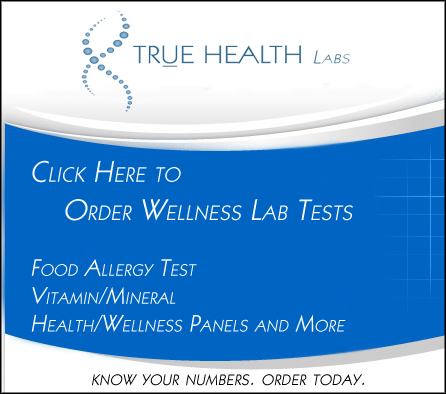Do you or your child have a phenotype methylation disorder?
What is a phenotype? It's your characteristics like the color of your eyes. Your phenotype is a description of your actual physical characteristics. We consider our genetic structure when we talk about hair color, height, but why not behavior. Unfortunately behavioral issues can be effected by more than your gene pool. There are four major behavior phenotypes starting with Antisocial-Personality Disorder, Intermittent Explosive Disorder, Oppositional/Defiant Disorder and Conduct Disorder. All of these have major issues underlying the problem that we really never discuss. I've talked a lot recently about MTHFR and this is all a part of the issue I've been sharing with you in my obsession over the underlying causes of our health in relation to genetics and nutrition.
For instance the antisocial-personality disorder often has lower copper and zinc levels, they have an under methylation issue, hypoglycemia, heavy metal toxicity and Kryptopyrrole which is an abnormality in biochemistry resulting in the overproduction of pyrrole molecules involving an abnormality in haemoglobin synthesis. The result is major deficiency in Vitamin B6 and Zinc, with a wide spectrum of mental/physical symptoms. The extent of the deficits are so large, they cannot be counterbalanced by foods high in these particular nutrients, and because of the problems with methylation often it is worsened by giving the person the non-methylated supplements thinking that they will help. I'm guessing you've never heard of it.
Intermittent Explosive Disorder has high Copper to Zinc ratios. Many high-copper patients (often labeled "depressives") experience severe PMS, are intolerant to estrogen, and may have a family history of postpartum depression. This group also has a high incidence of acne, eczema, sensitive skin, sunburn, headaches, poor immune function, and white spots under their fingernails.
Elevated copper/zinc ratios can be especially serious for persons with low blood histamine (over-methylation). This combination of imbalances has been associated with anxiety, panic disorders, paranoia, and (in severe cases) hallucinations.
Oppositional/Defiant Disorder has a high histamine level, that stinker low methylation, lower copper as well as lower calcium and magnesium. When brain histamine levels soar out of control, other frightening symptoms occur. Apart from its central role in the mediation of allergic reactions, gastric acid secretion and inflammation in the periphery, histamine serves an important function as a neurotransmitter in the central nervous system. Individuals with high-histamine levels may be due to a metabolic imbalance that results from under-methylation. Again, this means that the body does not methylate nutrition correctly, and needs to have some nutrients methylated for them. Many patients with obsessive-compulsive tendencies, "oppositional-defiant disorder," or seasonal depression are under-methylated, which is associated with low serotonin levels. Often with inhalant allergies, frequent headaches, perfectionism, competitiveness and other distinctive symptoms and traits. Tend to be very low in calcium, magnesium, methionine, and vitamin B-6 with excessive levels of folic acid. This lends to leaky gut, which causes even more histamine issues. What else elevates histamine levels... exercise, food (especially those already high in histamine like meat, leftovers, chocolate), environmental and food allergies (which is caused partially by the leaky gut, which causes more protein issues, which causes...horrible cycle).
Finally Conduct Disorder also has those severely-elevated pyrroles. It is estimated that approximately 10% of the population have that Kryptopyrrole or pyroluria, with estimates as high as 20% of all psychiatric patients and 40% of all schizophrenic patients, with a higher prevalence in women than men.
So when I say that NUTRIENTS matter and knowing can change your life... it's bigger than you think! And if you don't find out the underlying issues, the nutrition you are getting could be the very problem you are fighting to change. This is part of what I do as your holistic guide. I look at your issues, and give you challenges and offer suggestions to take to your practitioner to help you find answers and feel better.
Considering the processed food direction we're going in our country this isn't going to get any easier out there. The processed food world just keeps more modified, and the natural course of nutrition keeps getting hacked, but not in a good way in my opinion. Like the fact that Coca Cola is bringing Fairlife "milk" to the masses. They say that it is made different from traditional milk. It doesn't have any lactose or added proteins, is cold-filtered to concentrate the protein and calcium while removing the fat and sugar. Removing the fat? Didn't we already go that route. Remembering that the enzyme in the butterfat called lipase aids in fat digestion and assimilation of the fat-soluble vitamins. Remember that butterfat boasts anti-inflammatory and anti-carcinogenic properties and absorb the fat-soluble vitamins A, D, E and K in the milk. Seems that added protein and calcium without the fat will be a bad move health-wise, don't you think?
Considering the processed food direction we're going in our country this isn't going to get any easier out there. The processed food world just keeps more modified, and the natural course of nutrition keeps getting hacked, but not in a good way in my opinion. Like the fact that Coca Cola is bringing Fairlife "milk" to the masses. They say that it is made different from traditional milk. It doesn't have any lactose or added proteins, is cold-filtered to concentrate the protein and calcium while removing the fat and sugar. Removing the fat? Didn't we already go that route. Remembering that the enzyme in the butterfat called lipase aids in fat digestion and assimilation of the fat-soluble vitamins. Remember that butterfat boasts anti-inflammatory and anti-carcinogenic properties and absorb the fat-soluble vitamins A, D, E and K in the milk. Seems that added protein and calcium without the fat will be a bad move health-wise, don't you think?
Now of course Raw, full fat dairy is not commercial dairy, even though I don't drink either. The soda companies have been losing sales as folks start to move away from the sugary drinks. So as more folks are leaning into plant based dairy it seems that Coca Cola sees this as their in. Of course all of this comes on the tail-end of the study from Sweden that shows that drinking too much milk could be not as healthy as they thought.http://www.independent.co.uk/life-style/health-and-families/health-news/milk-might-not-be-as-good-for-us-as-we-thought-study-suggests-9823870.html
It truly is time to get serious about all of this, and figure out what works nutritionally for you in the terms of real food.

































0 comments:
Post a Comment